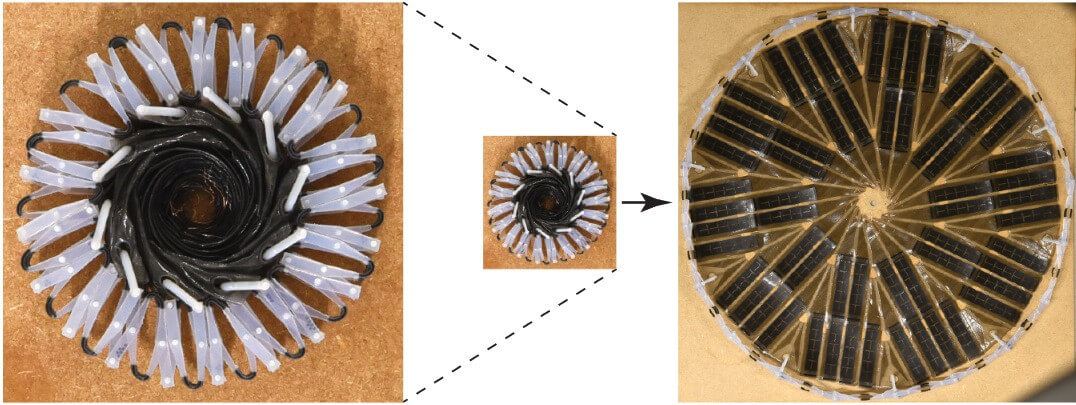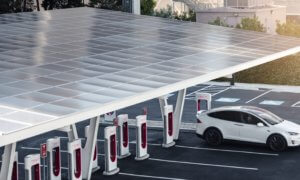Solar panels don’t usually move around, though it would be great if they could, especially if they were to be used on spacecraft or satellites. That’s what mechanical engineers Kristina Shea of the Swiss Federal Institute of Technology (ETH) in Zürich and Chiara Daraio of the California Institute of Technology in Pasadena decided to work on.
Their teams came up with the idea of developing a deployable solar panel structure that could be opened quickly and would not require any external power to do so.
In order to achieve that, they created a flower-like device that can ‘grow’ from a compressed state and then retreat inwards, or vice-versa, depending on the temperature.
The device is made out of a ‘shape-memory polymer’ which allows the material to stay rigid when it’s cold or to become soft once it senses higher temperatures.
The device relies on hinged joints to make this transformation happen. The mechanism the joints use was developed by engineer Chuck Hoberman and is reminiscent of the Hoberman sphere.
If the name does not ring a bell to you, you might be familiar with how the Hoberman sphere looks like instead; it’s sold in the shape of a toy that forms a balls shape when closed but expands into a larger spherical shell when opened.
The solar array structure though is circular and hosts a disk-shaped sheet that uses the same principles as an origami fold, which allows it to collapse into a spiral that resembles the pattern of rose petals.
This collapsible transition takes less than a minute but, for the time being, the device can only bloom outwards by itself, without any help. In order to compress, the disc must be folded back manually.
However, once the team will manage to get the device to fold back by itself, don’t be surprised if you’ll see it attached to satellites soon after.
Why? Simple: whenever the satellite would be near enough to the sun to suck in some power, the device could deploy itself for the duration of the ride without using up any additional power and then fold back into itself until next time. It would truly be an invaluable asset, especially for smaller satellites that don’t have a lot of room to backpack a lot of things.
It’s also easy to imagine a garden of solar arrays on your rooftop that would only bloom when the sun is shining.
You can read more about the research in the document published in the Physic Review Applied journal.
Follow TechTheLead on Google News to get the news first.





















